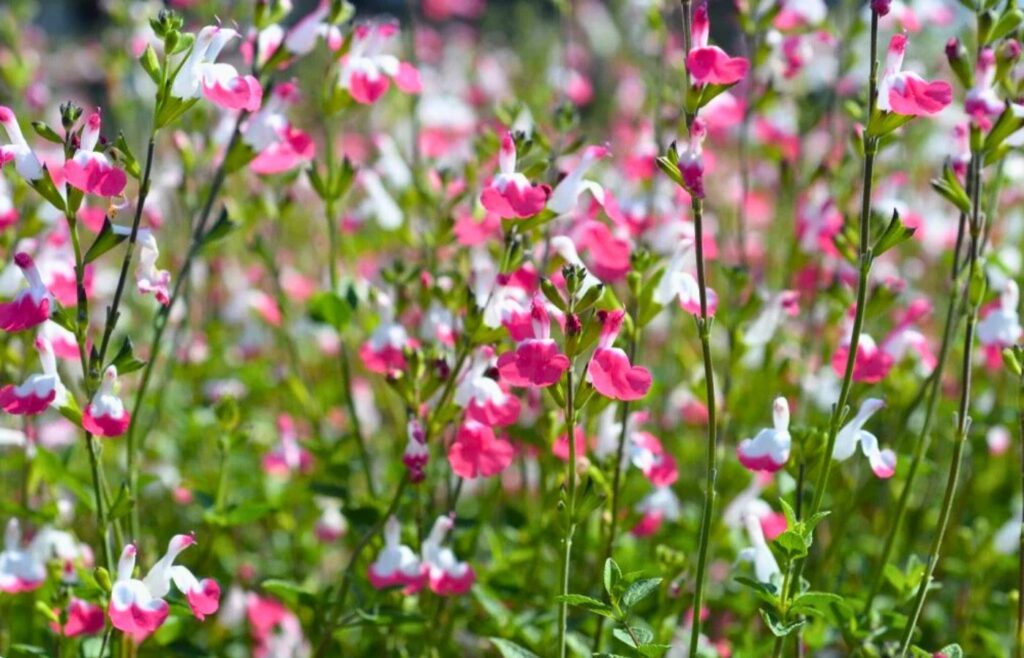Are you looking to enjoy the beauty of the woody sage in your garden? Great idea! These plants, native to South America, offer incredible diversity in terms of aesthetics and adaptability. Whether they are small shrubs or impressive specimens, they brighten the green spaces with their colorful flowers and ease of maintenance.
Here is everything you need to know to keep your woody sage beautiful and generous in flowering.
What features distinguish woody sages from other species?
Within the large plant family of sages, which includes nearly a thousand species, woody varieties stand out significantly. Unlike herbaceous or annual sages, such as the well-known common sage, these plants have a durable woody structure that grants them great longevity in the garden.
Among the must-have species is the Salvia microphylla. With its very decorative rounded shape, it generously displays its flowers from spring until the first autumn frosts. We must also mention Salvia greggii, known for its late-flowering and substantial development reaching up to 1.20 m in height.
Another captivating variety, Salvia jamensis, deserves a special mention. This woody sage features delicately fragrant, semi-persistent foliage and can adopt either an upright or sprawling growth habit. It blooms continuously from May to November and easily withstands cold temperatures down to -12°C, as well as drought.
When should you ideally trim your woody sage?
To enjoy your woody sage year after year, you will need to perform a regular and appropriate trim. So, when is the right time to intervene for a successful trim?
First of all, it is preferable to carry out an annual trim at the very beginning of spring. This coincides with the end of intense frost, typically in March or April, depending on your region. This is when the plant begins its growth again, making the trim most effective.
Here’s how to proceed:
- Always use clean and well-sharpened pruning tools to ensure good healing.
- Shorten the branches of your woody sage by about one-third of their length to stimulate the development of new shoots and encourage denser flowering.
You might also consider a second, lighter trim at the end of summer for particularly vigorous varieties. This secondary operation simply involves removing the stems that have flowered to promote a second bloom in autumn.
What additional care is needed to keep your woody sage in top condition?
Maintaining woody sages goes beyond just trimming. There are some simple daily care practices to ensure their good health and optimal appearance.
- First and foremost, be mindful of watering: these plants prefer well-drained and moderately watered soils. Overly moist soil can lead to root problems.
- Consider applying organic mulch. Applied at the start of spring, it will protect the roots and reduce water needs in summer while naturally enriching the soil.
- And don’t forget a simple rule: regularly remove wilted flowers (the famous deadheading) to encourage the growth of new flower buds.
- Depending on your preferences, a light application of well-decomposed compost in spring can also work wonders. While this step is optional, it will give your plant a nice boost for a beautiful start in the growing season.
- Finally, woody sages are naturally resistant to pests and diseases. Just be sure to provide a sunny spot with good air circulation around the leaves. That’s the best preventive treatment possible!
Do you already have a woody sage at home? What is your favorite variety? Feel free to share your personal experience in the comments! What techniques do you use to keep this plant thriving in your garden? We can’t wait to hear your tips and advice.

